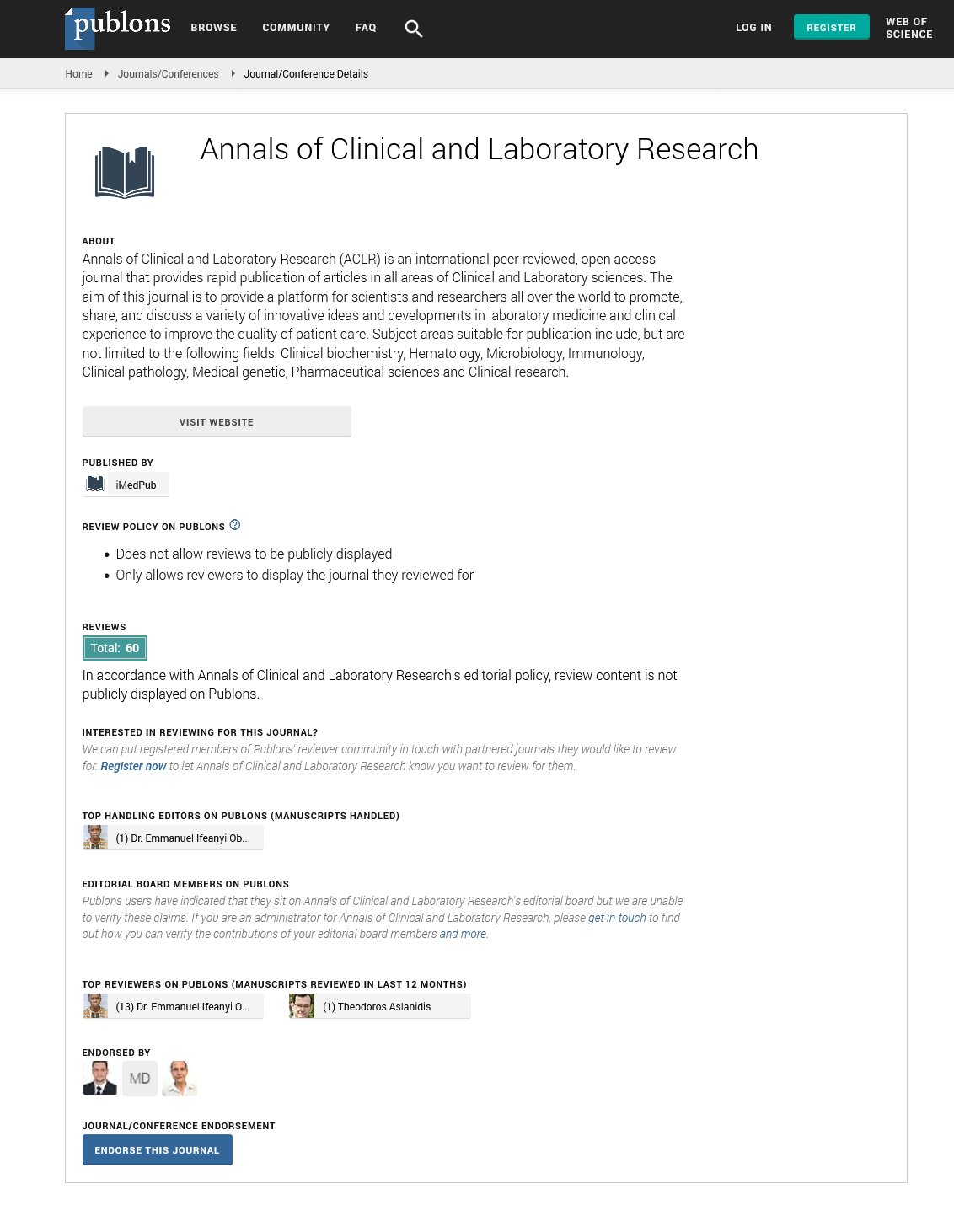Perspective Article - (2025) Volume 13, Issue 1
Optimizing Surgical Knot Security: Insights from Experimental Analysis of Pulling Direction
Yosri Arulraj*
Department of Surgery, University of Malaysia, Penang, Malaysia
*Correspondence:
Yosri Arulraj, Department of Surgery, University of Malaysia, Penang,
Malaysia,
Email:
Received: 03-Apr-2024, Manuscript No. IPACLR-24-14734;
Editor assigned: 06-Apr-2024, Pre QC No. IPACLR-24-14734 (PQ);
Reviewed: 19-Apr-2024, QC No. IPACLR-24-14734;
Revised: 05-Feb-2025, Manuscript No. IPACLR-24-14734 (R);
Published:
12-Feb-2025, DOI: 10.36648/2386-5180.25.13.501
Introduction
The impact of pulling direction on surgical knot security is a critical aspect of surgical technique that has been extensively studied to ensure optimal outcomes for patients undergoing surgery. Several experimental analyses have been conducted to evaluate how the direction in which tension is applied to a surgical knot affects its security and stability.
Findings from these experimental analyses have revealed that the direction of force applied to a surgical knot can significantly influence its integrity. Specifically, research has demonstrated that pulling forces applied parallel to the knot's axis, also known as "in-line" pulling, tend to result in greater knot security compared to forces applied perpendicular to the knot's axis, known as "off-axis" pulling.
Description
When tension is applied in-line with the knot, the wraps tighten evenly around the suture material, leading to a more secure knot configuration. In contrast, off-axis pulling can cause uneven tightening of the wraps, increasing the risk of slippage or unraveling of the knot.
Moreover, experimental studies have shown that the angle at which tension is applied relative to the knot can also impact its security. Pulling forces applied at acute angles relative to the knot axis have been associated with decreased knot security compared to forces applied at more perpendicular angles.
Overall, these findings underscore the importance of proper technique in tying surgical knots, including attention to the direction of pulling forces. Surgeons must be mindful of these factors during procedures to ensure the secure closure of tissues and minimize the risk of postoperative complications such as wound dehiscence or hemorrhage.
Additionally, these insights can inform surgical training programs, emphasizing the importance of knot-tying proficiency and mastery of proper technique to optimize patient outcomes. The experimental analyses revealed a significant impact of pulling direction on surgical knot security. Knots subjected to in-line pulling forces exhibited greater resistance to slippage and unraveling compared to knots subjected to off-axis pulling forces. Moreover, pulling angle relative to the knot axis was found to influence knot security, with acute angles associated with decreased security.
The findings highlight the importance of proper technique in tying surgical knots, including attention to pulling direction and angle. In-line pulling facilitates even tightening of the wraps around the suture material, resulting in a more secure knot configuration. In contrast, off-axis pulling can lead to uneven distribution of tension, increasing the risk of knot failure. These insights have implications for surgical training and practice, underscoring the need for surgeons to master knot-tying techniques that optimize knot security and stability.
Conclusion
Experimental analyses demonstrate that pulling direction significantly impacts surgical knot security, with in-line pulling associated with greater knot stability. Surgeons must be mindful of these findings during procedures to ensure optimal patient outcomes and minimize the risk of postoperative complications. Continued research and education efforts are warranted to further refine surgical techniques and enhance patient safety in the operating room.
Citation: Arulraj Y (2025) Optimizing Surgical Knot Security: Insights from Experimental Analysis of Pulling Direction. Ann Clin Lab Res Vol:13 No:1






